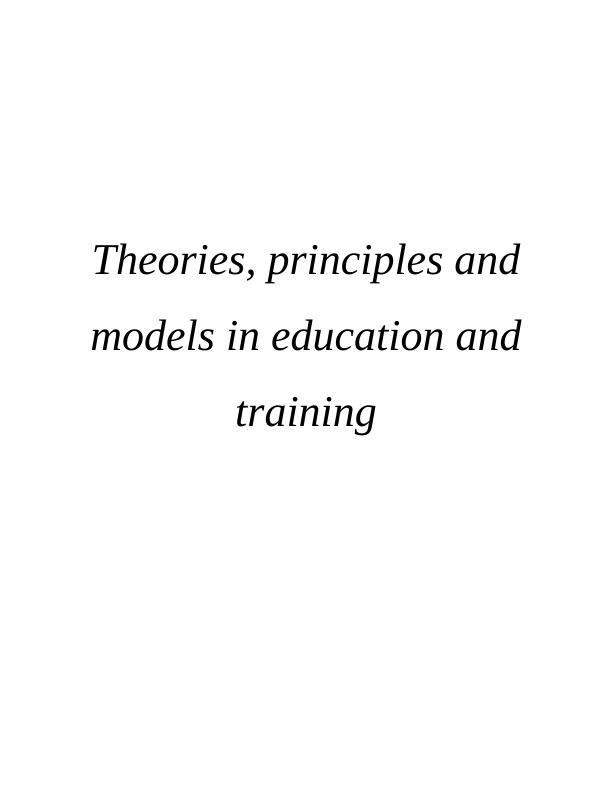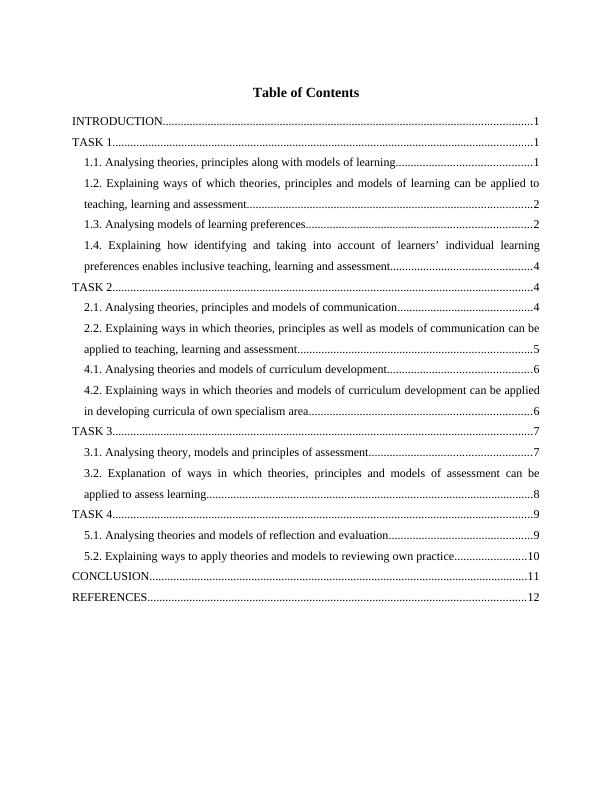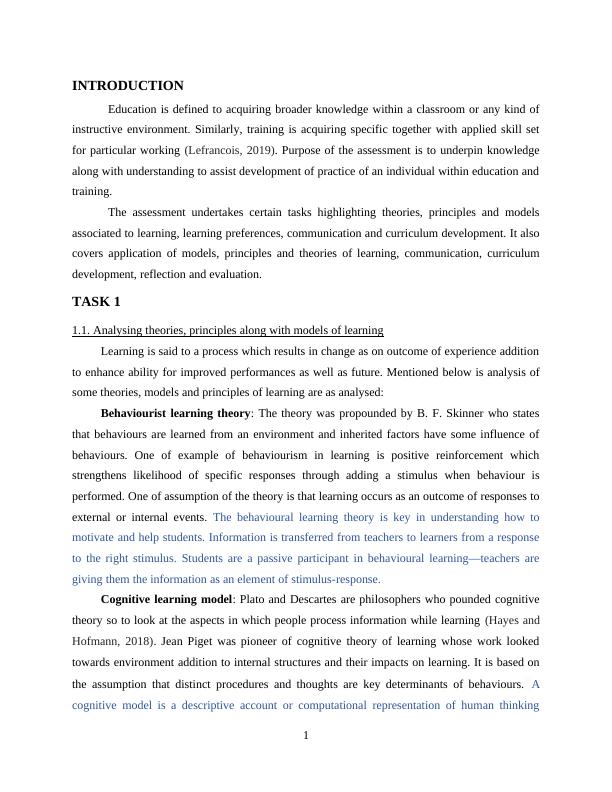Theories, Principles and Models in Education and Training
Analyzing theories, principles, and models of learning and teaching in education, applying them to own teaching, analyzing learning preferences, and explaining how to account for learners' individual learning preferences for inclusive teaching, learning, and assessment.
18 Pages5597 Words480 Views
Added on 2022-11-29
About This Document
This document explores the theories, principles, and models of learning, communication, curriculum development, and assessment in education and training. It discusses how these can be applied to teaching, learning, and assessment for inclusive education. The document provides an in-depth analysis of various theories and models, such as behaviourist learning theory, cognitive learning model, VARK model, Honey and Mumford model, Shannon and Weaver theory, and transactional communication theory. It also explains the principles of learning and communication, and how they can be applied in educational settings. The document is a valuable resource for students, educators, and researchers in the field of education and training.
Theories, Principles and Models in Education and Training
Analyzing theories, principles, and models of learning and teaching in education, applying them to own teaching, analyzing learning preferences, and explaining how to account for learners' individual learning preferences for inclusive teaching, learning, and assessment.
Added on 2022-11-29
ShareRelated Documents
End of preview
Want to access all the pages? Upload your documents or become a member.
Unit 3 Theories Principles and Models in Education and Training
|15
|5720
|369
Theories Principles and Models in Education and Training
|14
|3808
|235
Theories, Principles and Models in Education and Training
|18
|6809
|362
Theories, Principles and Models in Education and Training
|22
|7163
|160
Theories, Principles and Models of Teaching, Learning, Assessment and Curriculum Development
|16
|3983
|342
Theories, Principals and Models In education and training
|12
|3585
|40




